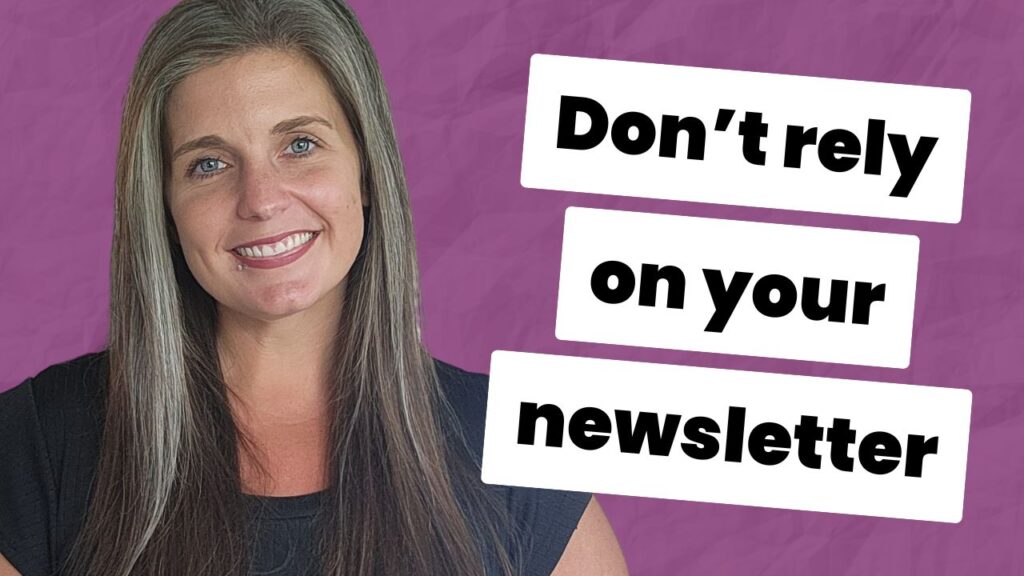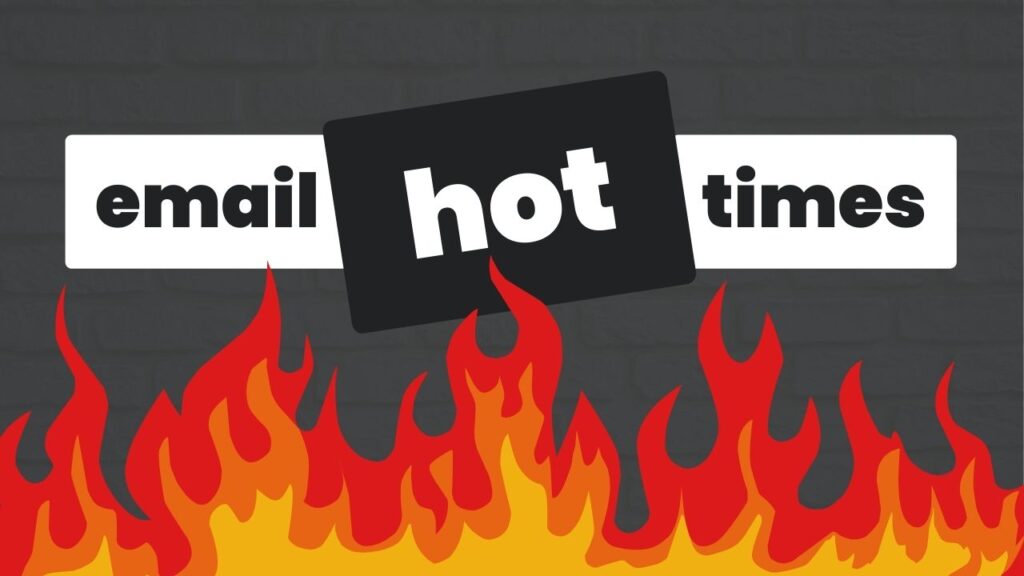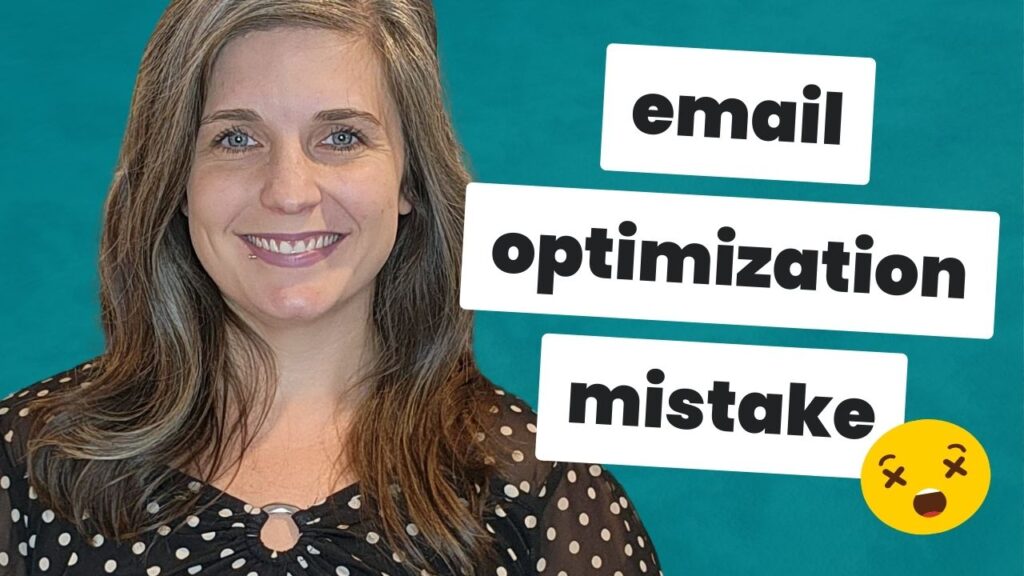You might think abandoned cart emails are just an e-commerce thing. They aren’t. Truth is, you, too, can use this automated email sequence to drive more revenue. Yep, even when selling high-ticket offers with a 1-1 sales process.
In this video, email strategist Paige Swaffer shows you how you can apply this strategy with high-ticket offers to capture more sales-ready leads.
TRANSCRIPT:
I have always been fascinated with abandoned cart email sequences, and that’s because they’re so effective at increasing sales. I have some data points that I’m going to share with you here in a minute.
Now, yes, abandoned cart emails typically are an e-commerce thing, but today I’m going to show you how you can use the abandoned cart email sequence strategy with high-ticket offers so that you can convert more leads into sales conversations, be those consult calls, strategy sessions, or more, even when there’s no actual cart.
Before we dive in, hi, I’m Paige. I’m an email strategist and copywriter, and I specialize in helping companies generate sales-ready leads using automated email systems. Here in a sec, I’m going to show you how to take this strategy and apply it to a high-ticket offer scenario.
Before I do, let’s make sure we’re on the same page.
What is an abandoned cart email sequence?
This sequence is nothing more than a series of automated emails that are sent when someone adds something to their cart and then leaves before completing their purchase, or visits a checkout page and leaves before completing that purchase.
Now, based on that definition, you can see that this is a behavioral-based email automation. It’s triggered by what a lead does—an action they take but then fail to complete. And they are extremely effective at increasing sales.
Here are some case studies I found when doing the research for this video.
- One e-commerce company reported that their abandoned cart email sequence was responsible for 28% of its email revenue—so the revenue coming specifically from email efforts.
- Another company reported that they were able to use their abandoned cart email sequence to recapture 30% of the potential lost sales due to abandoned carts.
- Another brand shared that they were getting a 26% conversion rate on their abandoned cart emails.
- And yet another brand was getting a 34% conversion rate on just two abandoned cart emails.
If I’m being honest, when I looked at the emails associated with these case studies, most of them were doing the bare minimum when it comes to persuasion, so there’s a lot of opportunity here.
But right now you might be wondering, “How am I supposed to use abandoned cart emails if I sell high-ticket offers and there’s no cart?”
Which is a valid point because, typically, in a high-ticket offer scenario, you have a one-on-one sales process. So people don’t go to a cart or a checkout page and check out. Usually, there’s a sales conversation—one-to-one, back and forth. You know, during that conversation process, there are proposals, there are contracts, but there’s no cart.
That’s actually not a problem because you can take the logic behind the abandoned cart email sequence strategy and design email experiences that do virtually the same thing for high-ticket offers—no cart required.
So let’s break it down piece by piece, and I’m going to give you ideas for how you can apply this to a high-ticket offer scenario.
Let’s start with the segment.
In the traditional abandoned cart e-commerce scenario, the segment that we’re after are people who have indicated a high degree of interest and intent towards purchasing. So that’s why it’s triggered by someone adding something to a cart and then leaving or visiting a checkout page and then leaving.
That’s going to be the same for our high-ticket scenario. That’s who we’re looking for—people who have indicated a high degree of interest and intent towards converting, so moving into a sales conversation but haven’t actually, you know, stepped over that finish line and actually booked a call.
So next, let’s look at the trigger.
In the e-commerce example, the trigger is, of course, adding something to the cart and then not completing the purchase, or visiting a sales page and not completing the purchase.
Now, for a high-ticket scenario, this is going to look different, right? Because you don’t use checkout pages, and you don’t use carts. So here are three types of triggers that you might use.
The first one is the most obvious—that’s your version of the checkout page, which is your book-a-call page or your book-a-demo page.
So that page where people actually submit their information and potentially even choose a day and time, that’s your checkout in this scenario. So you can build an abandoned cart email sequence around that moment. So when someone lands on that page but they don’t actually take the action to either book a call or submit their information.
The second way you could trigger the sequence is by using another high-priority page on your site.
So that’s something you’ll have to determine, but it could be your pricing page, it could be a specific case study, it could be a page that, like, the general public can’t get to, but it’s something that indicates that this person is really showing a lot of interest, a lot of intent, and might be ready for a sales call. So you’ll want to look at all the pages you have available on your site and in your overall buyer journey and identify any of those that indicate high interest and high intent.
The third way you can trigger this sequence—this one’s slightly more sophisticated—is by adding a branch to an existing email automation.
So for example, if you were using an automated webinar that then had the goal of someone booking a demo and you had an email sequence, an automated one for people who watch the webinar with the goal of getting them to book a demo, at the end of that automation, because they do eventually end, you could add a branch to segment out people who either opened an email, opened or clicked on an email, or even clicked on a specific link but didn’t convert.
You can then segment those people out and send them your abandoned cart type of emails. So it’s the exact same logic or mentality as the other examples, it’s just existing within a larger email system.
Which brings us to what happens next.
So in the e-commerce scenario, once someone abandons a cart or abandons a checkout page, they usually get a series of emails—usually about three, two to three emails—that have the goal of getting them back to the cart to complete the purchase, right?
So these emails usually involve reminders and addressing objections, sometimes providing additional proof points, you know, whatever needs to be said to get people back to the cart and confident in their decision to make that purchase.
In our high-ticket scenario, you can also send a series of emails with the goal of providing additional proof and addressing lingering objections.
You can also send what I call conversation starter emails. Now, these are short and sweet question-based emails designed to prioritize conversations over clicks, so your goal is to get a reply, not necessarily to get someone to click over to a landing page.
Now, these are my favorite for high-ticket offers because they allow you to open conversations and collect actual feedback to figure out why people aren’t converting.
Now, emails aren’t your only option here.
You can also layer in sales automation, especially if you have a high-touch sales process. So, for example, you can tell the automation to update this contact’s lead score, or you can tell it to notify your sales team that, “Hey, this person has taken a high-priority action,” and give them the opportunity to follow up one-on-one.
Or you can use a hybrid approach and mix and match a combination of these activities together, depending on what makes sense for the context in which you’re selling.
And that’s it. That’s how you can tap into the conversion potential of the abandoned cart email sequence strategy and still make it work for high-ticket offers that have no cart.


